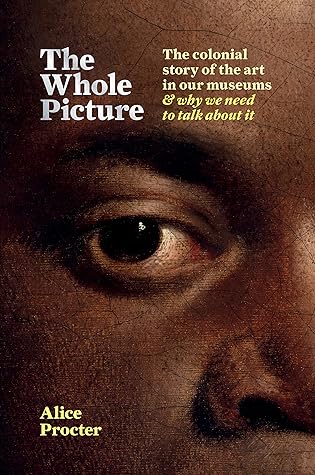More on this book
Community
Kindle Notes & Highlights
Read between
January 29 - February 1, 2022
Museums are more than just physical places designed to house collections. Their purpose is to shape identity and memory. They do not and cannot represent complete stories, but the distilled narratives they propose often contain the most treasured and the most contested facets of identity, national or otherwise.
I do not believe guilt is inherited, but responsibility is, and there is nobody alive today whose existence has not been shaped by colonialist, racist forces. That is a legacy we all live with, and we should all deal with the consequences.
But anyone who calls themselves an explorer is an invader to someone else – someone is always paying for the gilding and relentless progressing. And when a specific cultural moment is given this much prominence, and turned into a cradle of civilization, it is always at the expense of other regions, histories, communities.
Your personal taste is valuable, but it is also culturally produced: it will always be informed by the things you see around you, what’s familiar, what your peers like. It is affected by histories of art, design, society, and it is sculpted by the institutions – museums – that narrate that history.
All art is political. Everything in a museum is political, because it is shaped by the politics of the world that made it. If you can’t see the views and agendas coming through, that doesn’t mean they aren’t there: it might just mean that they are close enough to your own for you to take them for granted.
At what cost are we commemorating this narrow group of men, and what are the implications of enshrining the objects they loved? That’s why I’m starting with these stories: you have to know your history to understand how to challenge its legacy.
The house is filled with things that meant something to Soane, but that also meant something to lost individuals before him. The anonymized artists made these objects with care and concern. They have histories that go far further back than Soane, but in the space of his museum we encounter the objects, removed and recontextualized, via him. The house is an archive of his references, thoughts and ideas, as each object shifted its function to fit into his aesthetic narrative. They became specimens for his work, suitable for dissecting and combining as sources.
If you constantly see representations of your work as good, generous, necessary, even inevitable, that seeps into how you conceptualize and imagine yourself. It works like a highly targeted piece of propaganda, an advert that seems to follow you around until you buy into it.
The whole idea of ‘saving’ a painting for a national collection sits awkwardly, when at the same time many museums are attempting to justify keeping objects from other cultures that are sought for repatriation. It is a double standard, implying that some communities have more rights to their material histories than others.
When we look back at historical episodes, and especially social justice movements, it is too easy to see moments in isolation, and to want to identify dramatic turning points. We lose sight of the slow, determined action that always comes before a change; the decades of organizing before the moment of transformation. The people who do the most work to transform society and end its inequalities have nearly always been those most marginalized by the things they fight, and yet they are seldom the ones that get the credit.
An institution does not appear out of nowhere; it is made by people and their actions, and if you are to critique it, you must also unpack your own privilege and intent.
We move towards change not by concealing the harm that has been done, but by nursing the wounds and acknowledging the scars.
It’s not enough to just be not-explicitly-racist: you have to actually be anti-racist.


